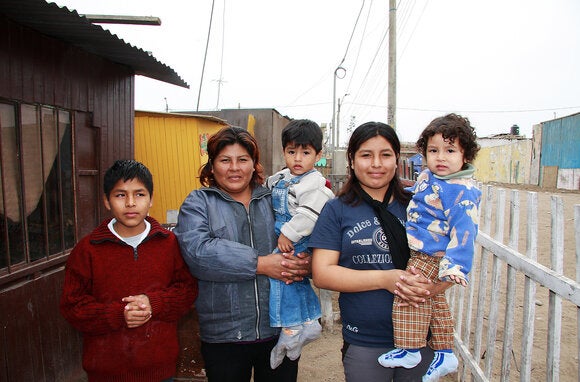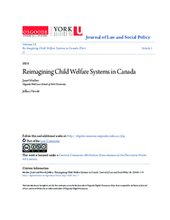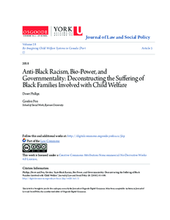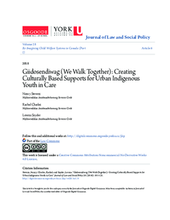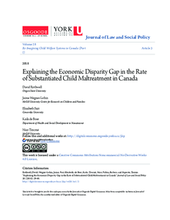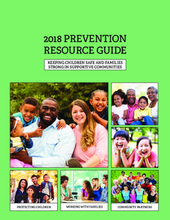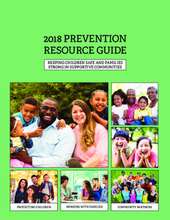This page contains documents and other resources related to children's care in the Americas. Browse resources by region, country, or category.
Displaying 2011 - 2020 of 3116
This study sought to understand parents' experiences of the supports and barriers to engagement in an evidence‐based parenting intervention (EBPI).
This article introduces Volume 28 of the Journal of Law and Social Policy which focuses on racism and overrepresentation of indigenous and ethnic minority children and youth in the social welfare systems.
This paper presents the qualitative analysis of pre- and post- focus groups with Children’s Aid Societies (CAS) workers who participated in the Positive Parenting Pilot Project (P4) and the emerging practice implications for working with families living with and affected by HIV.
This article focuses on how colonialism, anti-Black racism and white supremacy are embodied by Ontario’s child welfare system in relation to narratives of suffering experienced by Black families involved with this sector.
In Ontario, as elsewhere in the country, there are limited Indigenous-specific resources to assist in strengthening Indigenous youth, families, and communities. This article explores how that might be changed by using the Anishnaabeg Youth in Transition Program at Niijkiwendidaa Anishnaabekwewag Services Circle, based in Peterborough, Ontario, as one model of service delivery.
The purpose of this study is to understand the prevalence of economic hardship in the child welfare system and explain the economic disparity gap.
The 2018 Prevention Resource Guide was designed to support service providers as they work with families to promote child well-being and prevent child maltreatment.
The Community Opportunity Map is a tool that allows users to see localized indicators connected to community health and maltreatment prevention.
This dissertation was an ethnographic narrative study tracking eight young women who were “aging out” or forced to leave their orphanage in Peru, where most of them had spent a majority of their lives. The study examined the way in which a collaborative art community could support the participants as they narrated their lives over a 16-month period of time through photojournaling and social media outlets.
This Resource Guide was developed to support service providers in their work with parents, caregivers, and their children to prevent child abuse and neglect and promote child and family well-being.

